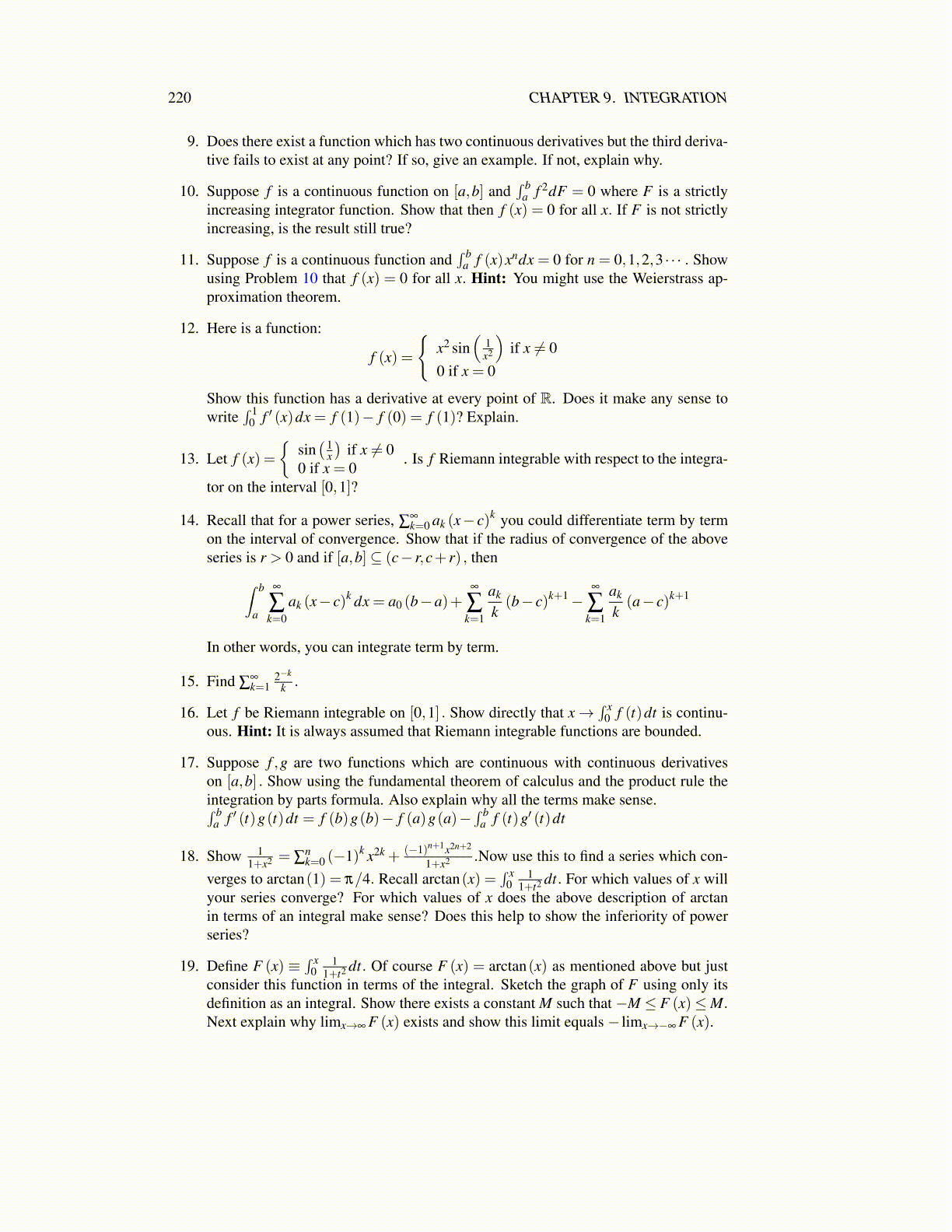
220 CHAPTER 9. INTEGRATION
the special value between a and a+1, then the area of A is equal to area of B. Whyshould x < a+ 1
2 ? Note that if A is the area of A and B the area of B,
f (x) ·1 =∫ x
af (t)dt +
∫ b
xf (t)dt = ( f (x)(x−a)−A)+( f (x)(a+1− x))+B
= f (x)+B−A
AB
xa a+1
Now use this to obtain the inequality 9.9.
32. Suppose f and g are continuous functions on [a,b] and that g(x) ̸= 0 on (a,b) .Show there exists c ∈ (a,b) such that f (c)
∫ ba g(x) dx =
∫ ba f (x)g(x) dx. Hint: De-
fine F (x) ≡∫ x
a f (t)g(t) dt and let G(x) ≡∫ x
a g(t) dt. Then use the Cauchy meanvalue theorem on these two functions.
33. Consider the function
f (x)≡{
sin( 1
x
)if x ̸= 0
0 if x = 0.
Is f Riemann integrable on [0,1]? Explain why or why not.
34. The Riemann integral is only defined for bounded functions on bounded intervals.When f is Riemann integrable on [a,R] for each R > a define an “improper” inte-gral as follows.
∫∞
a f (t)dt ≡ limR→∞
∫ Ra f (t)dt whenever this limit exists. Show∫
∞
0sinx
x dx exists. Here the integrand is defined to equal 1 when x = 0, not that thismatters.
35. Show∫
∞
0 sin(t2)
dt exists.
36. The most important of all differential equations is the first order linear equation,y′+ p(t)y = f (t) where p, f are continuous. Show the solution to the initial valueproblem consisting of this equation and the initial condition, y(a) = ya is given byy(t) = e−P(t)ya+e−P(t) ∫ t
a eP(s) f (s) ds, where P(t) =∫ t
a p(s) ds. Give conditions un-der which everything is correct. Hint: You use the integrating factor approach. Mul-tiply both sides by eP(t), verify the left side equals d
dt
(eP(t)y(t)
),and then take the
integral,∫ t
a of both sides.
37. Suppose f is a continuous function which is not equal to zero on [0,b]. Show that∫ b
0
f (x)f (x)+ f (b− x)
dx =b2.
Hint: First change the variables to obtain the integral equals∫ b/2
−b/2
f (y+b/2)f (y+b/2)+ f (b/2− y)
dy